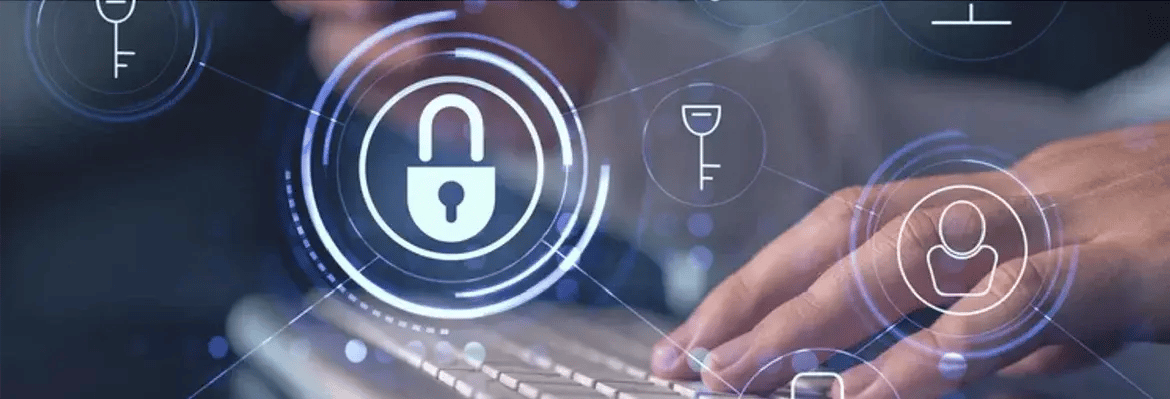Why is Cybersecurity Important for the Education Sector?
Date: 22 January 2022

Cybersecurity has become one of the most prominent and growing concerns for businesses and commercial establishments everywhere, with academic online paper writing services like domyessay.com not being an exception. In fact, in just 2020 alone, companies spent more than $123 billion on security.
Interestingly, large commercial enterprises and multinationals are not the only targets of cyber criminals today. They are targeting educational institutions with as much fervour as they’re victimizing governments, medical bodies, businesses etc.
Schools and institutions are now scrambling to protect themselves from cyber-attacks as they emerge as unlikely but very popular targets for hackers. From ransomware to phishing to brute-force tactics, schools and educational institutions have to now find ways to protect their sensitive data online and also prevent hackers from attacking their students and their confidential information.
Cyber-Attacks Targeting the Education Sector
There are many reasons why education is becoming a prime target for cybercriminals.
Educational institutions vary in size, purpose, and stature, and the motives of hackers can vary accordingly. For example, what might be a threat for world-renowned Universities or Colleges, given the value placed on their data, might not be an issue for local schools or school districts. So, educational institutions need to evaluate their individual risks and understand what data is vulnerable to unauthorized access.
For large and globally recognized institutions, a cyber-attack or ransomware attack can have huge implications on their brand reputation that has been built over years. Such educational institutions, then, need to look carefully at their cyber resilience capabilities and incident response strategies.
They’d do well by preparing for ransomware attacks in advance and working towards building a solid cyber incident response plan for themselves, akin to the kind of plans many cybersecurity-focused businesses are creating for themselves today.
Using our FREE Cyber Incident Response Plan Template is a good place to start for any educational institution looking to bolster their cyber-attack resilience.
Educational institutions can also refer to our Ransomware Checklist to assess exactly how ready they are to combat a ransomware attack.
But before we discuss that in greater detail, let’s look at some of the types of attacks that educational institutions are most vulnerable to today:
1. Distributed Denial of Service (or DDoS) attack is a common type of attack for online users and sites, including educational institutions. These attacks interfere with one’s Internet connection and network, slowing down any productivity online.
Many large and reputed companies have been subject to DDOSing. According to VXchnge, these are some of the companies that have gotten hit with DDOS attacks - Amazon Web Services (February 2020), GitHub (February 2018), Dyn (October 2016).
2. Espionage is another form of attack from bad actors online. Cybercriminals spy on activities done by students, teachers, and others in a school or institution and can even use the espionage to bully or threaten the students or teachers. An unprotected network leaves the door open for cybercriminals to steal and/or corrupt education data as well.3. Data theft is when espionage is used to steal sensitive data from institutions like schools, colleges, and universities. Sensitive data often includes:
- Student contact information (i.e., address, grade level and status, etc.)
- Personal information of students, teachers, etc. (i.e., social security number, credit/debit card information, etc.)
- Grading systems, and so on.
4. Cybercriminals are most often looking for financial gain, when committing theft and crime in a school or institution’s data system. They can either sell sensitive information online or they can hold the educational institution ransom. They may block access of the school to its own data until a ransom is paid – basically making it a ransomware attack.
Why Are Cyber-Attacks in the Education Sector Escalating?
It’s no surprise that cyber-attacks are escalating, even in the education sector. But why are educational institutions now being targeted by cybercriminals more actively?
First, limited budgets in school systems are to blame for a lack of protection against cyber-attacks. This is partially true, because protection requires better and smarter technologies to combat these malicious attacks. In the absence of such protection, schools become an easy target for cyber criminals.
Another factor may be the lack of technical staff in educational institutions. While school staff normally consist of teachers, administration, custodians, and maintenance, schools can benefit from having a tech crew to look into cyber concerns.
Another, and more recent factor would be the reliance on technology, thanks to the ongoing COVID-19 pandemic. With more and more people using online platforms for giving and attending educational sessions, the attack canvas has increased diametrically.
Accenture reported a 125% increase in incident volume since the pandemic hit on a global scale. And, since schools and universities began utilizing more and more technology and virtual resources during the lockdowns and shutdowns, students, teachers, and administrations are left more vulnerable than ever to cyber threats.
What Can Be Done?
The good news is that schools and institutions can still protect themselves from cybercriminals, even with limited budgets and resources in many cases. Here are some great tips to follow:
1. Train everyone in your school or institution. Ensure that everyone – students, teachers, staff, etc. – knows how to spot suspicious online activity, and what to do to resolve it.
Educational institutions can also invest in cyber incident planning and response training for their IT staff at least once in a year. This can help the organisation create its own effective cyber incident response plans, which in turn can go a long way in protecting the institution from the financial and reputational damage that comes with cyber-attacks.
2. Have an IT team install protection against ransomware, phishing attacks, and DDOSes. There are many cost-effective services and one-time investments that your institution can opt for to increase overall cyber resilience. With a few basic security software, your computer networks and systems will be far safer and your educational institution will remain protected at least from many basic cyber threats.
3. Encourage students and staff to use two-step authentication. When logging into school computers (or other devices), students, teachers, and other staff members should need to enter not only a password, but also another level of authentication in the form of a secret answer, solving a puzzle or entering a numeric code.
4. Have “live fire” drills. Like regular fire drills, “live fire” drills involve the administration staging a mock cyber-attack during regular school hours. This has students and teachers refer to their training, as they work to resolve and respond to the crisis.
These drills can also be relayed to everyone at school in the form of text messages, emails, etc.
For those educational institutions that have a bigger budget, conducting a full-fledged cyber crisis tabletop exercise would be even better. These are scenario-based exercises that simulate a cyber-attack and force everyone to think and act the way they would if there was a real cyber-attack. These tabletop exercises are also very cost-effective and help the organisation test its cyber breach readiness with minimal disruption to regular operations.
Conclusion:
As you can see, cyber-attacks can happen to anyone, including schools and institutions. That’s why it’s important for the education sector to take into consideration good cybersecurity practices, so that students, teachers, and everyone else associated with the school is protected from malicious activity and the institution itself is protected from harm to its bottom-line and its painstakingly-built brand reputation.
About the Author:
Christina Lee is a writer and editor at UK Writings. As a project manager, she oversees many projects in various companies in her hometown of Los Angeles. As a content writer, she writes articles about education, coding, and spotlighting various magnet schools.




.webp)

.webp)
